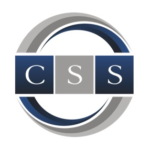
When it comes to medications, it’s important to remember that there can be risks associated with taking them. And, some of the risks can be serious and even life-threatening.
For example, Stevens-Johnson Syndrome (SJS) and Toxic Epidermal Necrolysis (TEN), severe conditions affecting the skin and mucous membranes, are often triggered by common medications, ranging from popular over-the-counter pain relievers to prescription drugs like Allopurinol and Lamictal.
SJS/TEN usually starts with “flu-like” symptoms and a rash in multiple areas of the body (not isolated to one particular area) followed by painful lesions or ulcers in the mucus membranes, including the mouth, eyes and genitalia. If patients are not properly evaluated, the symptoms can worsen. Once more than 30 percent of the skin is involved, it is no longer considered SJS but is classified as TEN.
Patients suffering from SJS/TEN often describe it as “burning from the inside out.” If a patient is not evaluated correctly and given prompt treatment, SJS/TEN can lead to even more severe conditions like respiratory failure, sepsis, damage to internal organs such as the kidneys, and, unfortunately, in many cases, death.
What types of drugs can lead to this severe skin condition?
Most SJS/TEN cases are a reaction to taking certain medications. The timing of symptom onset varies from person to person can depend upon many factors, such as the half-life of the drug and the patient’s immune system, however, most people who develop SJS/TEN do so with 60 days of starting the causative medication.
Here are some medications that have been known to cause SJS/TEN skin reactions.
Allopurinol (Aloprim, Lopurin and Zyloprim)
Researchers consider Allopurinol one of the most causative medications for SJS/TEN. It is a primary medication for treating gout and kidney stones and can be prescribed to cancer patients to reduce the high levels of uric acid caused by chemotherapy.
In a study conducted at Vancouver General Hospital, a team of researchers studied 64 patients (admitted between 2001-2011) with a diagnosis of either SJS or TEN. The goal was to identify medications most often implicated in triggering the conditions. The results successfully identified a trigger in 75 percent of the cases, and Allopurinol was the medicine considered to be the most common cause.
Lamictal (Lamotrigine)
This medication is used as both an anticonvulsant to combat seizures and a mood stabilizer to treat bipolar disease. In 2018, the Food and Drug Administration (FDA) required manufacturers to include a black box warning with Lamictal due to its association with severe skin reactions, including SJS/TEN. The FDA also stressed that patients taking Lamictal in addition to the drug valproate (Depakote), also used for seizures, certain psychiatric disorders and migraines, should take extra caution due to an increased risk of the potential reaction.
Scientists also stress exercising extreme caution when it comes to giving young patients Lamictal. Children, between the ages of two and 16, are almost three times more likely to develop SJS from taking Lamictal than adults. Lamictal is only approved for use in children with epilepsy, not for those children with bipolar disorder or other mood disorders.
Sulfonamide (Septra, Pediazole and Bactrim)
Sulfonamide drugs are used to treat bacterial and fungal infections. Other antibiotics associated with SJS/TEN include macrolide, penicillin and quinolone.
To combat SJS/TEN, drug makers must have adequate product labeling in place, alerting patients and health care providers to these conditions. Doctors must have a complete understanding of their patient’s medical history, including knowledge of current and recently stopped medications. It is also the physician’s responsibility to make sure these medications are prescribed in the proper dose and titrated in accordance with the FDA package insert in order to reduce the risk of developing life-threatening illnesses, such as SJS/TEN.
What happens if a drug reaction leads to SJS/TEN?
When a physician diagnoses SJS/TEN or determines a strong suspicion for it, the patient should be immediately taken off any medication suspected of playing a role in the illness. SJS/TEN is considered a medical emergency and usually requires hospitalization, often in a burn unit. The individual must swiftly receive wound care, access to pain control and treatments to reduce the risk of infection. A patient who is not provided specialty treatment will likely suffer from an exacerbation of their injuries and possibly suffer long-lasting effects, including vision problems and acute respiratory failure.
If you or a loved one has recently developed SJS or TEN, contact Childers, Schlueter & Smith at 1-800-641-0098. Our dedicated drug injury attorneys can help you to determine your legal options. We help patients and families all over the country, and we do so with unparalleled experience and results.

At Childers, Schlueter & Smith, our attorneys are dedicated to helping victims of personal injury and/or those who have lost a loved one to wrongful death determine their legal options. We are a distinguished law firm that is driven by years of experience and exceptional results. If you or someone you know has been injured due to another’s negligence, please contact our firm to discuss your legal options.











Comments for this article are closed.